Hi ya,
From time to time, I post images or links to images from SOHO. The reason I do this is to try and understand the impact of solar activity on everyday life - you might notice patterns, who knows.... I've also had a few questions as to what these images mean and how to read them. So here is an explanationregards
Ed.
solar flare
Sunspot
About the Very Latest SOHO Images
NOTE:
- Times shown are UT (universal time) unless noted otherwise. Solar North is up in all the near real time images.
IMAGE BROWSER
Launch the interactive browser to learn more about EIT and MDI images.
Credit: This browser was developed by Kristian Pontoppidan
Larsen. He is an Applied Physics Engineer from Denmark and a SOHO fan
who likes to develop web applications and study the connection between
the sun, weather and climate.
LASCO IMAGES
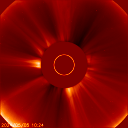 | 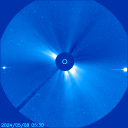 |
Images: LASCO C2 (left). LASCO C3 (right).
LASCO (Large
Angle Spectrometric Coronagraph) is able to take images of the solar
corona by blocking the light coming directly from the Sun with an
occulter disk, creating an artificial eclipse within the instrument
itself. The position of the solar disk is indicated in the images by
the white circle. The most prominent feature of the corona are usually
the coronal streamers, those nearly radial bands that can be seen both in C2
and C3. Occasionally, a coronal mass ejection can be seen being expelled
away from the Sun and crossing the fields of view of both coronagraphs.
The shadow crossing from the lower left corner to the center of the
image is the support for the occulter disk.
C2 images show the inner solar corona up to 8.4
million kilometers (5.25 million miles) away from the Sun.
C3 images have a larger field of view: They encompass
32 diameters of the Sun. To put this in perspective, the diameter of
the images is 45 million kilometers (about 30 million miles) at the
distance of the Sun, or half of the diameter of the orbit of Mercury.
Many bright stars can be seen behind the Sun.
Visit SOHO Explore! to learn more about the Sun.
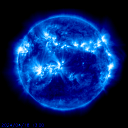 | 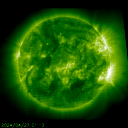 | 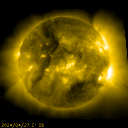 | 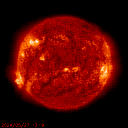 |
Images: From left to right: EIT 171, EIT 195, EIT 284, EIT 304
EIT (Extreme
ultraviolet Imaging Telescope) images the solar atmosphere at several
wavelengths, and therefore, shows solar material at different
temperatures. In the images taken at 304 Angstrom the bright material
is at 60,000 to 80,000 degrees Kelvin. In those taken at 171 Angstrom, at 1
million degrees. 195 Angstrom images correspond to about 1.5 million
Kelvin, 284 Angstrom to 2 million degrees. The hotter the temperature,
the higher you look in the solar atmosphere.
Visit SOHO Explore! to learn more about the Sun.
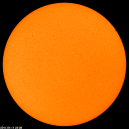 | 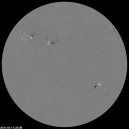 |
Images: MDI Continuum (left). MDI Magnetogram (right).
The MDI (Michelson Doppler
Imager) images shown here are taken in the continuum near the Ni I 6768
Angstrom line. The most prominent features are the sunspots. This is
very much how the Sun looks like in the visible range of the spectrum
(for example, looking at it using special 'eclipse' glasses:
Remember, do not ever look directly at the Sun!). The
magnetogram image shows the magnetic field in the solar photosphere,
with black and white indicating opposite polarities.
Visit SOHO Explore! to learn more about the Sun.
3 comments:
timberland boots
hermes belts
zx flux
lebron 16
kyrie 6 shoes
air jordans
vans shoes
golden gooses outlet
nike air max 97
yeezy boost 350
allez maintenant sacs de répliques en ligne ce site Web réplique louis vuitton cliquez pour en savoir plus Valentino Dolabuy
replica bags south africa hermes replica f5r63j4c75 replica prada nylon bags find here l5w16q4i68 replica ysl handbags replica bags from korea replica bags from china website here w0y42u3o89 replica bags wholesale mumbai
Post a Comment